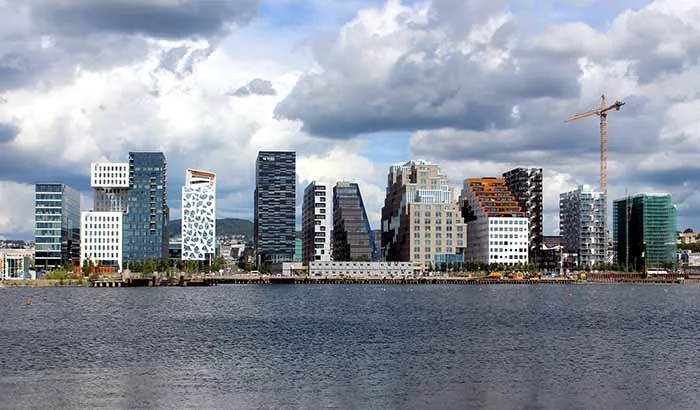In 2023, Oslo earned its title as the world’s electric vehicle capital, a testament to its forward-thinking policies and commitment to sustainability. With over 80% of new cars sold in Norway being electric, Oslo has set a global benchmark for urban mobility transformation. This article will explore the innovative strategies and community efforts that propelled Oslo to the forefront of the electric vehicle (EV) revolution, offering insights into how other cities can follow suit.
The Rise of Electric Vehicles in Oslo
A Visionary Approach to Urban Mobility
Oslo’s journey to becoming the electric vehicle capital began with a clear vision set by the Norwegian government and local authorities. As early as 2012, Norway introduced ambitious incentives for EV adoption, including tax exemptions, reduced registration fees, and free public parking for EVs. These measures were part of a broader strategy to reduce carbon emissions and promote sustainable urban living.
- Incentives Galore: According to Bloomberg Green, EV owners in Oslo enjoy perks such as toll-free roads, access to bus lanes, and substantial reductions in purchase taxes.
- Infrastructure Investment: Oslo invested heavily in EV infrastructure, with over 2,000 public charging stations across the city. This extensive network, highlighted by Electrek, ensures that EV drivers can recharge conveniently.
Government Policies and Public Support
The Norwegian government’s commitment to phasing out fossil fuel vehicles by 2025 has been a significant driving force. This target, reported by Reuters Mobility, has accelerated the adoption of EVs in Oslo.
- Public Transport Electrification: In addition to personal vehicles, Oslo has electrified its public transport system. Buses and trams in the city now predominantly run on electricity, reducing the city’s carbon footprint.
- Community Engagement: Initiatives such as “Electric Days,” where citizens can test drive EVs, have fostered public enthusiasm and awareness about electric mobility.
The Role of Technology and Innovation
Cutting-Edge Battery Technology
One of the critical elements in Oslo’s EV success story is its embrace of advanced battery technology. With insights from Battery University and the International Energy Agency (IEA), Oslo has been at the forefront of integrating high-performance batteries that offer longer range and faster charging times.
- Battery Advances: Developments in lithium-ion and solid-state battery technology have made EVs more practical for everyday use, addressing range anxiety concerns.
- Collaborations with Tech Giants: Oslo has partnered with international tech firms like Tesla and Hyundai to pilot innovative battery solutions, ensuring that residents have access to the latest advancements.
Smart Charging Infrastructure
Oslo’s smart charging infrastructure has played a crucial role in its EV proliferation. According to TechCrunch, the city has implemented intelligent charging solutions that optimize energy use and reduce costs.
- Dynamic Pricing Models: Charging stations in Oslo utilize dynamic pricing, encouraging EV owners to charge during off-peak hours to save money and alleviate grid pressure.
- Integration with Renewable Energy: Many charging stations are powered by renewable energy sources, further aligning with Oslo’s sustainability goals.
Practical Tips for Other Cities
How to Implement Effective EV Policies
Cities looking to replicate Oslo’s success can start by adopting a comprehensive set of policies and incentives tailored to local needs.
- Subsidies and Tax Breaks: Introduce generous subsidies and tax incentives for EV buyers to encourage adoption.
- Investment in Infrastructure: Prioritize the development of a robust EV charging network to support growing demand.
- Public Awareness Campaigns: Organize events and initiatives to educate citizens on the benefits of EVs and sustainable transport.
Where to Focus Infrastructure Development
The strategic placement of charging stations is crucial to ensuring accessibility and convenience.
- High-Traffic Areas: Install charging stations in high-traffic areas such as shopping centers and business districts.
- Residential Zones: Ensure that residential neighborhoods are equipped with ample charging points to support home charging.
Conclusion: The Road Ahead for Electric Vehicles
Oslo’s transformation into the world’s electric vehicle capital is a compelling narrative of vision, innovation, and community collaboration. By setting ambitious goals, investing in technology, and fostering public engagement, Oslo has demonstrated that a sustainable urban future is achievable.
As cities worldwide grapple with climate change and pollution, Oslo serves as a beacon of hope and a practical model for others to emulate. Will your city be the next to embrace the electric revolution? Join the conversation and explore how sustainable mobility can transform your community’s environmental impact and quality of life.
In the words of Oslo’s mayor, “The future of urban mobility is green, and Oslo is proud to lead the charge.” As we look ahead, the question isn’t just about how many cities will follow Oslo’s lead, but how quickly they can do it.

